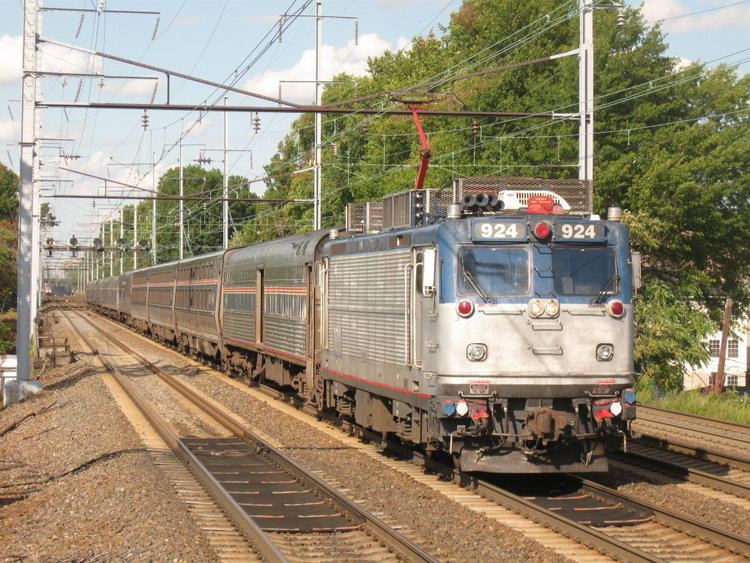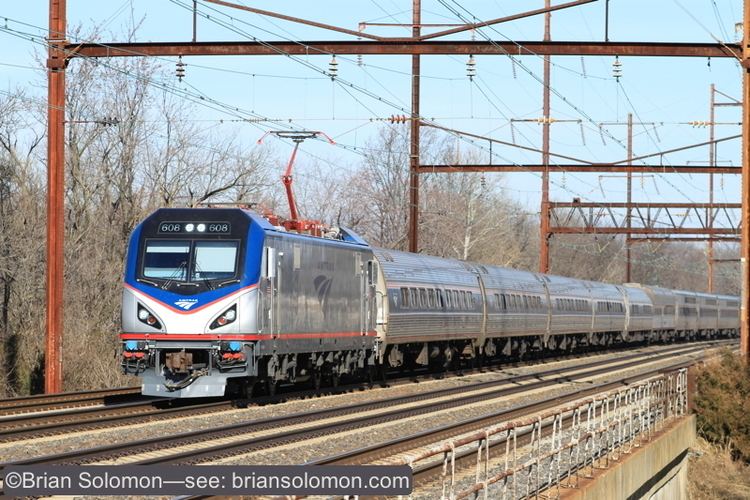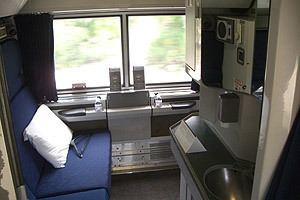Distance travelled 1,389 miles (2,235 km) Current operator Amtrak | Train number(s) 97-98 Dist. Station First service 2 February 1939 | |
 | ||
Ridership 1,023 daily373,576 total (FY11) Former operators | ||
The Silver Meteor is a passenger train operated by Amtrak between New York City and Miami, Florida. The first diesel-powered streamliner between New York and Florida, since being introduced by the Seaboard Air Line Railroad (SAL) in 1939, it remains in operation now. The train is part of Amtrak's Silver Service along with the Silver Star, another former SAL streamliner.
Contents
- Silver meteor amtrak s train route between new york miami views inside the train
- History
- Route details
- Equipment
- References

Silver meteor amtrak s train route between new york miami views inside the train
History

The SAL introduced the Silver Meteor on February 2, 1939. The name was selected via contest, with 30 people among 76,000 entrants proposing the winning name. It was the first diesel-powered streamliner to Florida, and its introduction prompted competitor Atlantic Coast Line Railroad to introduce the Champion in December 1939. The SAL emphasized the train's modernness, referring to it as the "Train of Tomorrow" and having its first trip to Florida begin not from Pennsylvania Station, but from the Long Island Rail Road station at the 1939 New York World's Fair. The train used seven new cars manufactured by the Budd Company. The original schedule took 25 hours. The train ran between New York, NY, and Washington, DC on the Pennsylvania Railroad under a haulage agreement. Between Washington and Richmond it used the Richmond, Fredericksburg and Potomac Railroad, jointly owned by the SAL and five other railroads. From Richmond south SAL's own track was used via Raleigh, North Carolina, Columbia, South Carolina, Savannah, Georgia, Jacksonville, Florida and Ocala, Florida. Until the late 1960s the Silver Meteor split at Wildwood, Florida, with one section continuing to Miami, Florida, and the other to St. Petersburg and Sarasota-Venice on Florida's west coast.

The SAL merged with the Atlantic Coast Line Railroad to form the Seaboard Coast Line Railroad in 1967, and in 1968 the new railroad reshuffled the Florida streamliners. The Silver Meteor lost its west coast section and began serving Miami only. Amtrak retained the train when it took over most intercity passenger trains on May 1, 1971.

From December 17, 1971 to April 15, 1972 and September 10, 1972 to April 27, 1973, the Silver Meteor bypassed Jacksonville, running over the track between the Georgia state line and Baldwin, Florida. Between June 11 and September 10, 1972 the Silver Meteor was extended to Boston and called the Meteor. Service to St. Petersburg returned with the train splitting at Auburndale.

On September 30, 1979 the Silver Meteor was rerouted between Savannah and Jacksonville over the former Atlantic Coast Line Railroad route, due to the abandonment of the old SAL route. On January 31, 1984 the Silver Meteor's Florida west coast terminus was cut back from St. Petersburg to Tampa, ending almost 100 years of rail passenger service to St. Petersburg. By October 26, 1986 the Silver Meteor had shifted to the old ACL route north of Savannah, as the abandonment of the SAL route north of Raleigh affected only the Silver Star. On June 11, 1988 the tracks between Coleman and Auburndale, Florida were abandoned, then removed to create the General James A. Van Fleet State Trail, shifting the Miami section west to Lakeland.
By the end of 1988 train numbers were 87 and 88 (to Tampa) and 97 and 98 (to Miami). The Tampa trips were later dropped and 97 and 98 are still used.
The best timing for Amtrak's Silver Meteor between Miami and New York City was 27 hours in 2008; SAL's first edition took 25 hours in 1939. Late trains often add more hours to today's schedules.
In the January 2011 issue of Trains Magazine this route was listed as one of five routes to be looked at by Amtrak in FY 2011 as the previous five routes (Sunset, Eagle, Zephyr, Capitol, and Cardinal) were examined in FY 2010.
Route details
The Silver Meteor's route covers 1,389 miles (2,235 km) between New York City and Miami, Florida. The train originates at New York's Pennsylvania Station and travels south to Washington, D.C. via Amtrak's Northeast Corridor. From there the train operates entirely over CSX track via Richmond, Virginia, Fayetteville, North Carolina, North Charleston, South Carolina, Savannah, Georgia, Jesup, Georgia, Jacksonville, Florida and Orlando, Florida. It also uses the Central Florida Rail Corridor from DeLand, Florida to Poinciana, Florida and the South Florida Rail Corridor from West Palm Beach to Miami
The Silver Meteor shares much of its route with the Silver Star, which runs further west through North Carolina and South Carolina and detours to serve Tampa, Florida. The daytime Palmetto uses the same route as the Silver Meteor but terminates in Savannah.
Equipment
The original Silver Meteor used lightweight cars built by the Budd Company. Three consists were needed for a daily train between New York and Miami; each had a baggage-dormitory-coach (22 seats), three 60-seat coaches, a tavern-lounge-coach (30 seats), a dining car, and a coach-observation-lounge (48 seats). Some of the coaches were owned by the Pennsylvania Railroad. Budd delivered more cars in November–December 1940, allowing daily service to St. Petersburg: three baggage-dormitory-coaches (18 seats), seven 56-seat coaches, two dining cars, and three coach-buffet-observation cars (30 seats).
The Silver Meteor now uses Amtrak's standard long-distance single-level equipment: Viewliner baggage cars, Viewliner sleeping cars, Viewliner or Heritage Fleet dining cars, Amfleet cafe-lounges and Amfleet coaches. Amtrak's ACS-64 hauls the train on the Northeast Corridor between New York and Washington, D.C. South of Washington, two GE P42DC diesel electric locomotives replace the electric locomotive.
A typical Silver Meteor includes:
